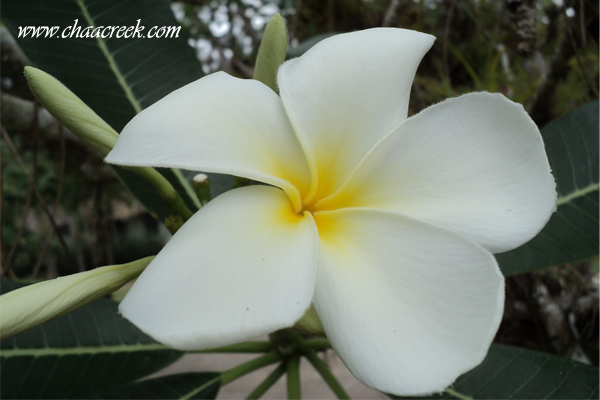One can only truly enjoy the plumeria’s full splendor in person within its native habitat. In Belize one is delightfully surprised by these beautiful flowers as your senses become aware and heightened by the plumeria’s unique aroma lingering through the air within the lush green rainforest.
A fresh, poignant scent surrounds the plumeria exciting and titillating its observers as on of Mother Nature’s most sublime aphrodisiacs. It’s difficult to escape the magical appeal of this tropical flower when in good company basking in its presence taking pleasure in its beauty and deeply aroused by its aroma, the soft, velvety, milk-like texture of its petals splashed at their union with subtle gentle pastels beckoning butterflies, hummingbirds and lovers alike. If you’re so fortunate a meandering honey bee might even approach you and add to this natural plethora of jungle delights.
The plumeria is a fragrant flower that is native and common in Central America and is found all over the world. The name “frangiapani” comes from the sixteenth century Italian marquess who invented a popular perfume made of plumeria. The common name for this flower varies from country to country. In Sri Lanka it is known as the “Aralia” or Temple Tree; in Cantonese it is known as the “gaai daan fa” meaning Egg Yolk Tree; in Nicaragua it is known as the “Sacuanjoche”, their national flower.
Its proper name, plumeria, is in honor of the renowned French botanist Charles Plumier who documented many plants and animal species around the globe.
The plumeria can be found in an assortment of colors, including whites, yellow, pinks and red. These multiple pastels on its large smooth petals not only adorn the jungles of Belize with its elegance but are also the source of one of the rainforest’s most enticing fragrances.
Photography by Allan Chan
